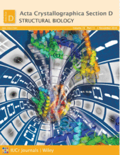
Acta Crystallographica Section D-Structural Biology
Scope & Guideline
Fostering Innovative Studies in Molecular Structures
Introduction
Aims and Scopes
- Macromolecular Crystallography:
The journal publishes research on the determination of three-dimensional structures of biological macromolecules using X-ray crystallography, including advances in crystallization techniques, data collection, and structure refinement. - Cryo-Electron Microscopy (Cryo-EM):
Research on cryo-EM is a significant focus, covering methods for sample preparation, data acquisition, and reconstruction of structures at near-atomic resolution. - Computational Methods in Structural Biology:
The journal highlights the use of computational approaches, including molecular modeling, machine learning, and deep learning, to predict structures and analyze macromolecular interactions. - Structural Dynamics and Kinetics:
Studies examining the dynamic aspects of biomolecules and their functional implications through time-resolved structural analysis are prominently featured. - Structural Insights into Biological Functions:
Papers often explore the relationship between structure and function, providing insights into biochemical pathways, enzyme mechanisms, and protein interactions. - Innovative Data Processing and Validation Techniques:
The journal emphasizes advancements in data processing, validation methods, and software tools that enhance the reliability of structural data.
Trending and Emerging
- Integration of AI and Machine Learning:
There is an increasing trend in utilizing artificial intelligence and machine learning techniques for data analysis, model validation, and structure prediction, showcasing the journal's adaptation to contemporary computational advancements. - Time-Resolved Structural Analysis:
Emerging research emphasizes time-resolved methods to study dynamic processes in biomolecules, allowing for insights into enzymatic mechanisms and conformational changes during function. - Fragment-Based Drug Design:
The journal has seen a rise in studies focusing on fragment-based approaches for drug discovery, highlighting structural insights that can lead to the development of novel therapeutics. - Structural Biology in Drug Development:
There is a growing emphasis on the role of structural biology in understanding drug interactions and mechanisms, particularly in the context of infectious diseases and cancer. - High-Throughput Screening and Automation:
Recent publications indicate a trend towards high-throughput methods and automation in crystallography and cryo-EM, facilitating rapid data collection and analysis. - Interdisciplinary Approaches:
The integration of structural biology with other disciplines such as bioinformatics, biochemistry, and systems biology is increasingly reflected in the journal's content, promoting a more holistic understanding of biological systems.
Declining or Waning
- Traditional X-ray Crystallography Techniques:
There is a noticeable decline in publications solely focused on traditional X-ray crystallography methods without incorporation of novel techniques or computational advancements. - Studies on Static Structures:
Research focused purely on static structures without dynamic or functional analysis has decreased, as there is a growing emphasis on understanding how structures relate to biological function. - Nuclear Magnetic Resonance (NMR) Studies:
Papers utilizing NMR spectroscopy for structural determination have become less frequent, possibly due to the rise of more accessible and high-resolution techniques like cryo-EM and advanced X-ray methods. - Focus on Non-Biological Macromolecules:
There has been a waning interest in the structural studies of non-biological macromolecules or materials, with a stronger emphasis now on biologically relevant targets.
Similar Journals

PROTEINS-STRUCTURE FUNCTION AND BIOINFORMATICS
Connecting Structure to Function in the Protein UniversePROTEINS - STRUCTURE FUNCTION AND BIOINFORMATICS, published by WILEY, is a leading journal in the fields of biochemistry, molecular biology, and structural biology, recognized for its significant contribution to protein research since its inception in 1986. With its impressive rankings in the Q1 category for Biochemistry and Q2 for both Molecular Biology and Structural Biology in 2023, the journal serves as an essential resource for researchers and professionals seeking to explore the intricate relationships between protein structures and their functions. The journal, based in the United States, operates without an Open Access model, ensuring a curated selection of high-quality peer-reviewed articles that drive innovation and collaboration in the scientific community. Engaging with the robust content of PROTEINS not only bolsters academic scholarship but also opens avenues for groundbreaking discoveries that are pivotal in the advancing field of bioinformatics.
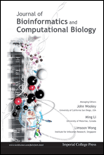
Journal of Bioinformatics and Computational Biology
Innovating Solutions for Complex Biological ChallengesThe Journal of Bioinformatics and Computational Biology, published by WORLD SCIENTIFIC PUBL CO PTE LTD, serves as a significant platform for disseminating innovative research in the dynamic fields of bioinformatics and computational biology. With an ISSN of 0219-7200 and an E-ISSN of 1757-6334, this journal facilitates the exchange of ideas and advancements from its inception in 2003 and continues to be pivotal through 2024. Despite its classification in the lower quartiles—Q4 in Biochemistry and Q4 in Molecular Biology, along with Q3 in Computer Science Applications—the journal remains a valuable resource for researchers and students alike, as it emphasizes interdisciplinary approaches essential for tackling complex biological problems through computational methods. Located in Singapore, the journal encourages submissions of high-quality, peer-reviewed articles that offer insights into computational techniques that empower biological research. Although this journal does not offer open access options, its contributions to research are increasingly recognized across various academic platforms. As the field evolves rapidly, this journal continues to attract a growing readership, making it an essential reference point for anyone interested in the intersection of biology and computer science.
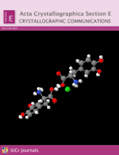
Acta Crystallographica Section E-Crystallographic Communications
Unlocking the mysteries of crystals, one communication at a time.Acta Crystallographica Section E-Crystallographic Communications is a premier academic journal dedicated to the field of crystallography, published by the International Union of Crystallography. With an Open Access model established since 2008, this journal fosters the rapid dissemination of significant research findings in crystallographic studies, offering researchers and professionals the ability to freely share and access critical data. The journal is recognized for its contribution to various interdisciplinary categories, achieving notable standings in the 2023 rankings, categorized in the Q3 quartile in Chemistry (miscellaneous) and Materials Science, and the Q4 quartile in Condensed Matter Physics. By bridging the gap between theoretical and practical aspects, Acta Crystallographica Section E serves as a vital resource for those looking to deepen their understanding of crystallographic phenomena and its applications in science and engineering. The journal maintains its commitment to quality and innovation in research, ensuring a vibrant platform for scholarly communication within the scientific community.

Journal of Structural Biology-X
Fostering Collaboration in Cutting-Edge Structural ResearchThe Journal of Structural Biology-X, published by Elsevier, is a leading open-access journal dedicated to advancing the field of structural biology. Launched in 2019, it has quickly established itself as a vital resource for researchers, professionals, and students, boasting a prestigious Q1 ranking in Structural Biology for 2023 and achieving an impressive Scopus rank of #19 out of 49 in the biochemistry, genetics, and molecular biology category. With an E-ISSN of 2590-1524, this journal emphasizes accessibility and collaboration by providing open access to its comprehensive collection of research articles, reviews, and cutting-edge methodologies. The scope of the journal encompasses significant themes within structural biology, including protein structure, molecular interactions, and imaging techniques, facilitating interdisciplinary dialogue and innovation. Join the global community of scientists and contribute to the body of knowledge that propels our understanding of molecular architecture through the Journal of Structural Biology-X.

Journal of Biochemistry
Your essential resource for biochemical advancements.Journal of Biochemistry, published by Oxford University Press, is a prestigious academic journal that has been at the forefront of biochemical research since its inception in 1922. With an ISSN of 0021-924X and an E-ISSN of 1756-2651, this journal serves as a platform for disseminating high-quality research in the fields of biochemistry, molecular biology, and medicine, holding impressive rankings such as Q2 in Biochemistry and Medicine (miscellaneous) in 2023. As of 2024, the journal continues to explore significant topics in these areas, offering valuable insights for researchers, professionals, and students alike. The journal does not currently offer open access, but it remains a vital resource for anyone in the biochemical community seeking to stay updated on the latest discoveries and advancements. With its rich history and dedication to scientific excellence, the Journal of Biochemistry is an indispensable part of the scholarly landscape.
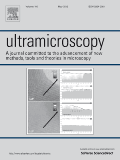
ULTRAMICROSCOPY
Elevating Scientific Discourse in Microscopy and PhysicsULTRAMICROSCOPY is a premier journal published by Elsevier, specializing in the fields of atomic and molecular physics, optics, as well as electronic, optical, and magnetic materials. Established in 1975 and continuing its publication through 2024, this journal has earned a distinguished reputation, reflected in its classification within Q1 and Q2 quartiles, representing the top 25% of journals in its category. With a Scopus rank of 49 out of 141 in the instrumentation domain, it holds a compelling percentile rank of 65%, demonstrating its impact and relevance in advancing research. The journal serves as an essential platform for researchers, professionals, and students alike, promoting high-quality, peer-reviewed articles that explore innovative techniques and applications in microscopy. While ULTRAMICROSCOPY is not open access, it continues to play a crucial role in disseminating cutting-edge findings to the scientific community globally, fostering collaboration and discussion among experts in the field.

Frontiers in Bioinformatics
Connecting Ideas, Driving Innovation in BioinformaticsFrontiers in Bioinformatics is a leading academic journal dedicated to advancing the field of bioinformatics by publishing high-quality research and review articles. Published by FRONTIERS MEDIA SA, this open-access journal aims to foster innovative research, promote collaborative initiatives, and provide a platform for the dissemination of findings related to computational biology, biostatistics, and the intersection of bioinformatics with other biological disciplines. With a focus on promoting accessibility and visibility of research, Frontiers in Bioinformatics operates under a rigorous peer-review process, ensuring that all published content meets the highest academic standards. The journal has shown a commendable rank across various Scopus categories, including Mathematics, Computational Mathematics, and multiple dimensions of Biochemistry and Molecular Biology, indicating its relevance and impact within the research community. Researchers, professionals, and students will find this journal invaluable for staying abreast of the latest developments and breakthroughs in bioinformatics, enhancing their studies and professional projects.

CURRENT OPINION IN STRUCTURAL BIOLOGY
Connecting Ideas in the World of Structural Biology.CURRENT OPINION IN STRUCTURAL BIOLOGY is a premier journal published by CURRENT BIOLOGY LTD that serves as a critical platform for disseminating comprehensive reviews and the latest insights into the field of structural biology. With an impressive impact factor and ranked in the top quartile (Q1) in both Molecular Biology and Structural Biology categories, this journal exemplifies excellence in its scope and academic rigor. Researchers and professionals benefit from its insightful articles that cover cutting-edge developments, methodological advancements, and the implications of structural biology in various biological contexts. As part of the esteemed Current Biology series, the journal is committed to enriching the scientific community's understanding of biomolecular structures and their functions. Based in the United Kingdom and indexed in Scopus with high rankings in multiple relevant fields, CURRENT OPINION IN STRUCTURAL BIOLOGY remains an essential resource for scholars at every stage of their academic journey, from students to seasoned researchers, ensuring the ongoing progress of knowledge in this dynamic field.

Current Research in Structural Biology
Pioneering Insights in Structural Biology ResearchCurrent Research in Structural Biology, published by Elsevier, is a pioneering Open Access journal that has rapidly gained prominence since its inception in 2019. With a focus on advancing the understanding of molecular and structural biology, this journal provides a platform for researchers and professionals to publish groundbreaking findings that contribute to the field's ongoing development. With a commendable Q2 ranking in both Molecular Biology and Structural Biology categories for 2023, it serves as a vital resource for the community, ensuring accessibility to high-quality research. The journal is indexed in Scopus, showcasing its significant impact and relevance, particularly with a ranking of #26/49 in the Structural Biology discipline. Located in the heart of the Netherlands, Current Research in Structural Biology not only fosters academic discourse but also encourages collaborative research efforts in addressing critical biological questions. Whether you are a researcher, student, or industry professional, this journal is essential for staying abreast of the latest advancements and trends in structural biology.
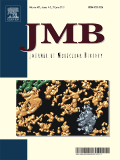
JOURNAL OF MOLECULAR BIOLOGY
Elevating Molecular Biology to New HeightsThe Journal of Molecular Biology (ISSN: 0022-2836, E-ISSN: 1089-8638), published by Academic Press Ltd - Elsevier Science Ltd, stands as a premier platform for disseminating significant advancements in the field of molecular biology. With a distinguished history of publication spanning from 1959 to 2024, this journal is recognized for its high-quality, peer-reviewed articles that engage with transformative research in biophysics, structural biology, and molecular biology. The journal holds an impressive Q1 category ranking across these disciplines in 2023, affirming its impact and relevance within the scientific community. Notably, it ranks #11 in biophysics and #5 in structural biology based on Scopus metrics, placing it in the 93rd and 90th percentiles, respectively. As an essential resource for researchers, professionals, and students alike, the Journal of Molecular Biology serves as a vital conduit for the exchange of innovative ideas and discoveries, fostering a deeper understanding of life's molecular underpinnings.